Fish With Benefits
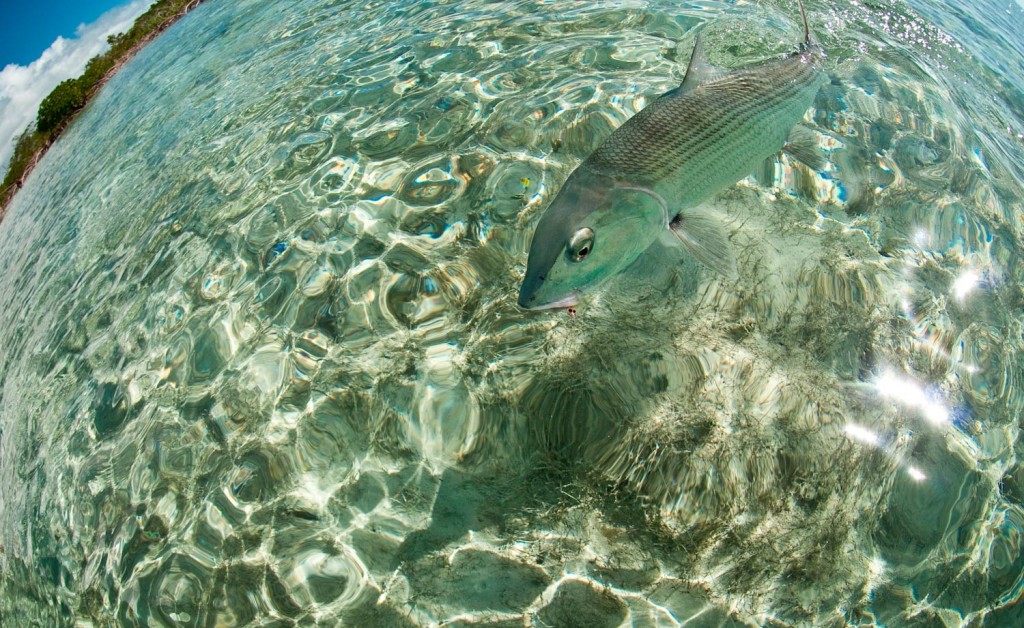
I was asked the other day what was my favorite species of fish.
That’s a really tough question for me. Sort of a Sophie’s choice question. After thinking about it for a long time I answered trout, for a host of reasons, but I quickly added, “and bone fish”! For some odd reason I then felt like I had to defend that answer. I had said trout and I had just finished talking at length about a tarpon trip I had just been on and here I was blurting out bonefish. Why? I went on to explain using a rationale I have used for years. “The bonefish is just right. It’s hard enough to catch, usually because of the conditions, that you feel like you’ve done something worthwhile but it’s not impossible like a permit. When you hook them it’s a great fight, but not an ass beating like a tarpon. They’re the just right fish”.
That’s all true and I believe it but inside I knew there was more. It ate at me, why do I love bonefish so much? I think I’ve come up with the answer. I love the fish but what I really love is bonefishing. When I think of bonefish I think of the Bahamas and when I think about fishing the Bahamas it’s a whole different feeling.
When I’m headed to the Keys for tarpon, for example, I’m excited, hell, more than excited. I know that I’m taking on a huge challenge and that something truly awesome may happen, and then again it may not. I may catch the fish of a life time or
Read More »Why Travel For Great Lakes Carp?
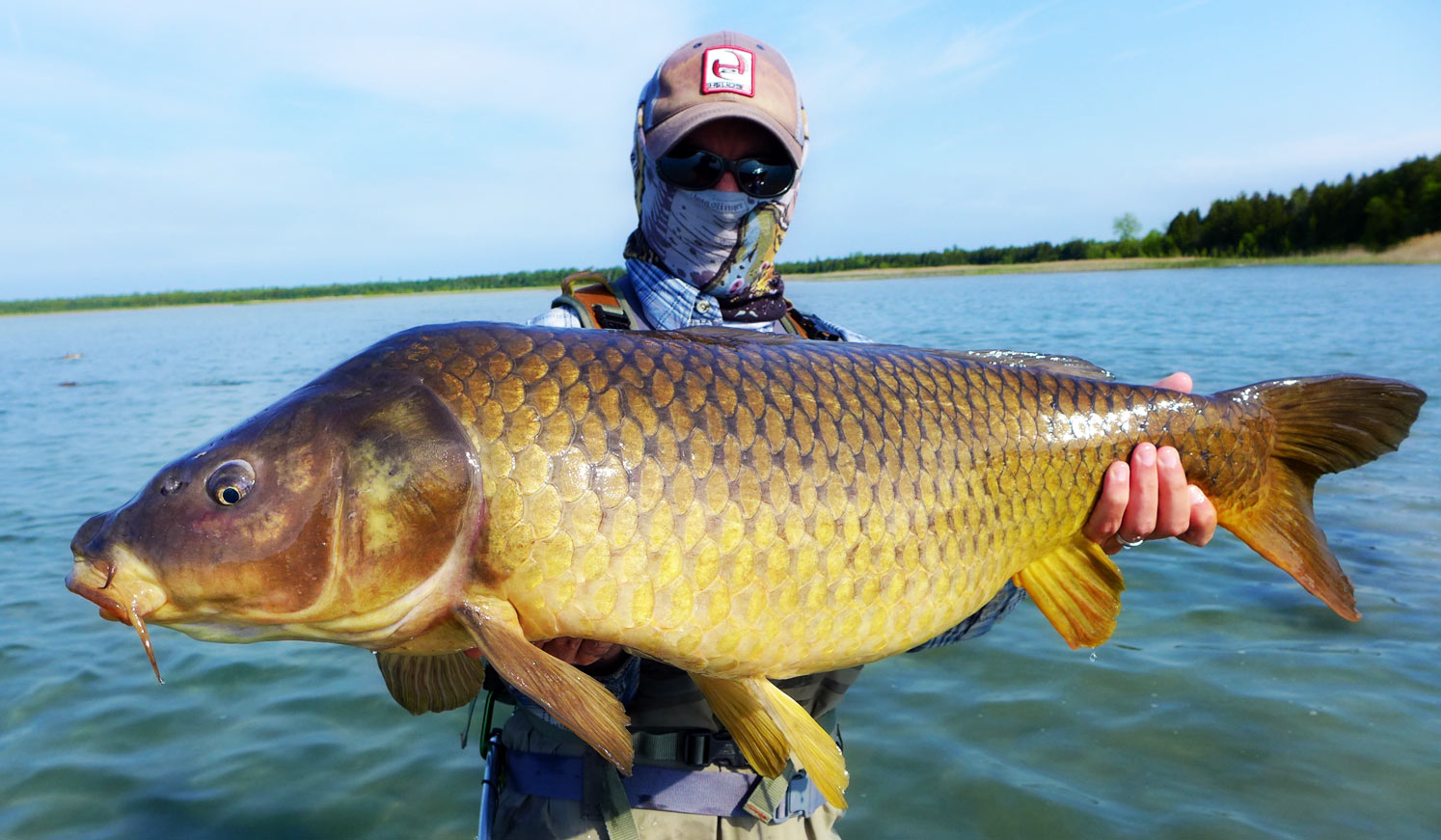
By Jason Tucker
Everyone has a bucket list.
For most of us that includes the Bahamas or a similar destination for bonefish. Carp fishing the flats in the Great Lakes should also be on that list. Why?
Crystal clear water in an other-worldly setting. Once you get out on those flats you’ll forget you’re in the Midwest and swear you’re in the salt. Clear water, gulls and terns, wind and waves, but no insidious salt to wash off at the end of each day.
Sight fishing. Sight fishing clear water to spooky fish is the Grail of flats fisherman. Lake Michigan offers it up in spades, and with hundreds of miles of flats available, you’ll often have them to yourself.
Large numbers of big fish. Occasionally you’ll be casting to strays. Most of the time you’ll have dozens to several hundred fish swimming around you, and the challenge will be to pick one and not spook the rest. Peeling off fish from the edges of the larger group is often the key. Lake Michigan fish average
Read More »Realistic Flies Are Worthless Without Movement
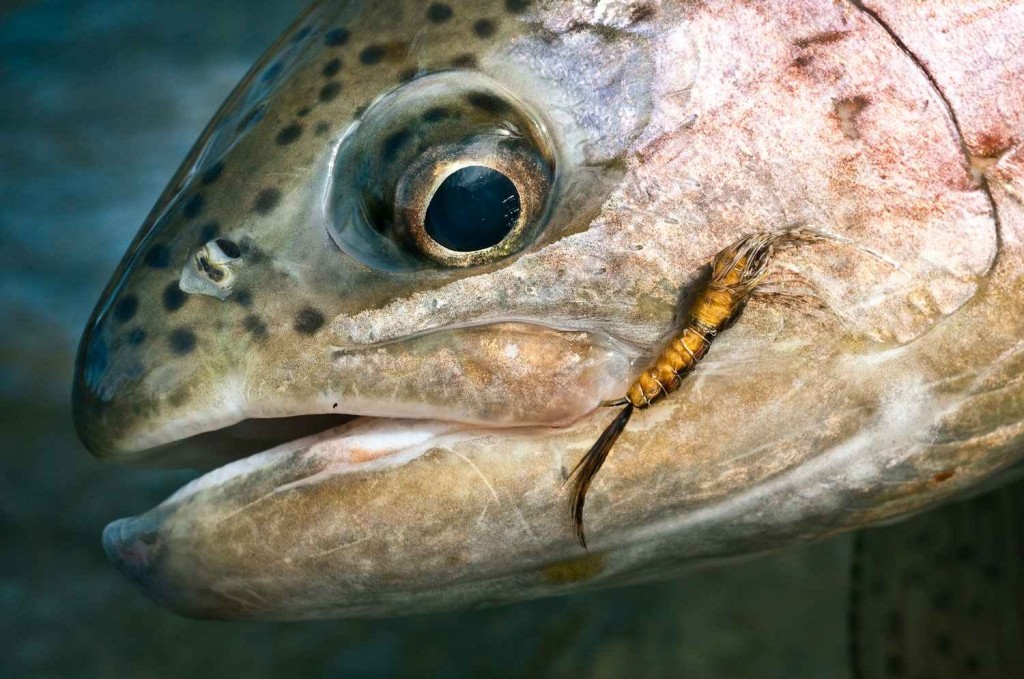
Worthless may be a little overboard, but there is some truth behind it.
Every year new fly tying products burst onto the scene that are specifically designed for making our fly patterns look extra realistic. I’ll be the first to admit many of them are amazingly cool and innovative. I mean, who wouldn’t want black eyes on their tungsten beads, or a perfect set of pre-molded wing pads or stonefly legs you can plop on a hook to make your nymphs look ultra life-like, right? Seeing these new innovative materials for the first time always gets me giddy, like a fat guy spotting a 5 for 5 deal at Arby’s. But here’s the real question I think we should be asking ourselves. When it comes to purchasing and tying our fly patterns, should we only be focused on how realistic they look?
I say hell no, but you’d be surprised how many fly fishermen out there believe “a realistic look” trumps all other attributes in a fly. Ask a fly shop owner why they carry them if they don’t catch fish, and they’ll quickly tell you, because they sell like hot cakes, that’s why. I think a fly being realistic is great, but there needs to be more working elements in a pattern than just a flashy realistic look. I’ve personally found,
Read More »Elevate Yourself to Increase the Distance You Can High-Stick
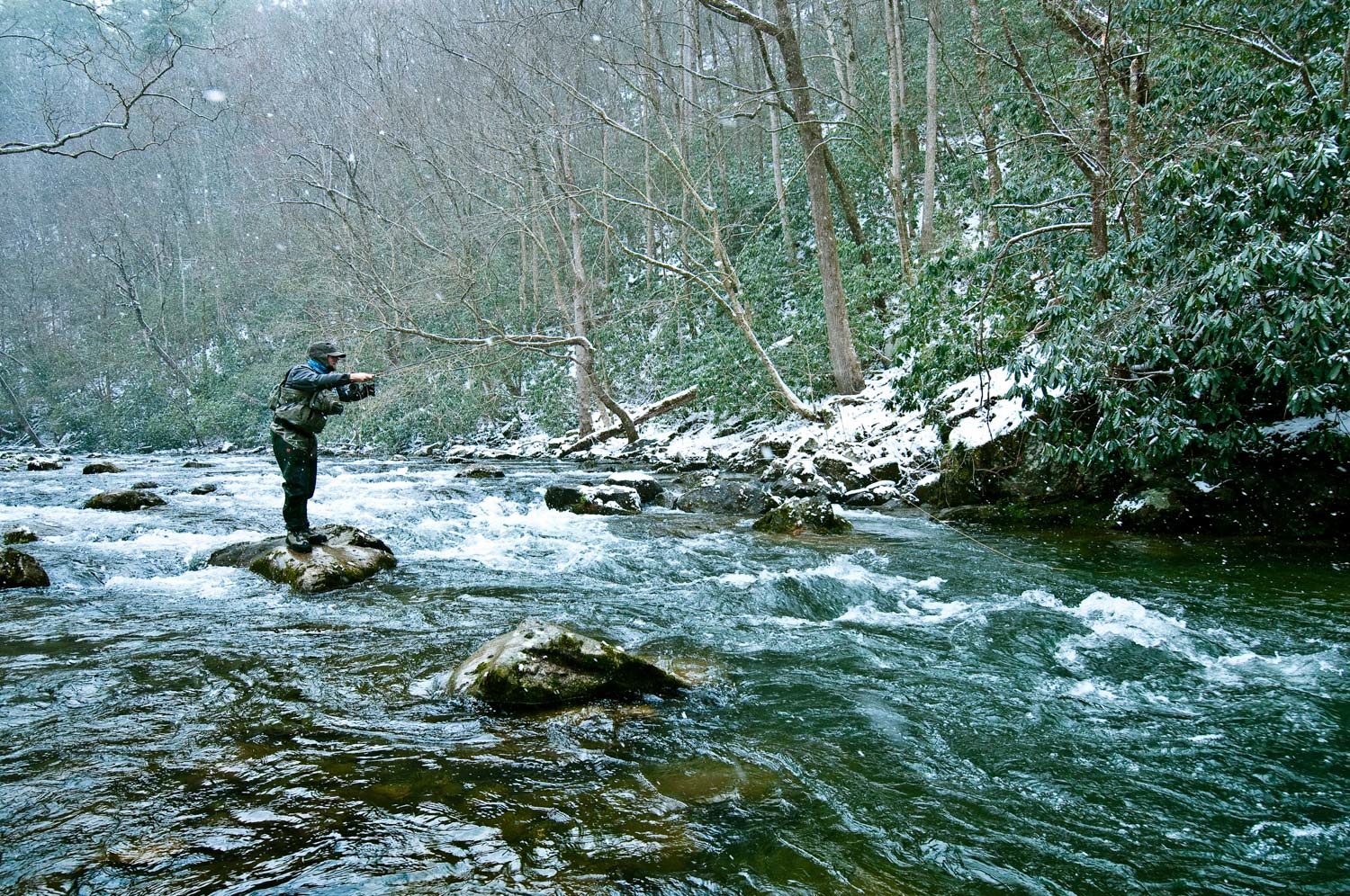
Most of the time when your fly fishing for trout, the last thing you want to do is elevate yourself. In most scenarios, that will usually do more harm than good, by increasing the chances of trout spotting you and spooking. Notice I said “most scenarios”, every once in a while, an angler is forced to go against traditional principles to find success. The other day, I found myself trying to fish an eddy and slow water seam on the far bank. Making the cast wasn’t the problem, it was getting a long enough drag-free drift to get my fly to the fish. Even with my best high-sticking efforts, every cast the super fast water between me and my target water would grab my fly line and suck my flies out prematurely. After a couple minutes of struggling with my drifts and failing to get any bites, I decided to climb up on a boulder next to me. This elevated me three feet, and allowed me to keep 100% of my fly line off the water and get that long drag-free drift. I caught three trout after
Read More »Carp Czar
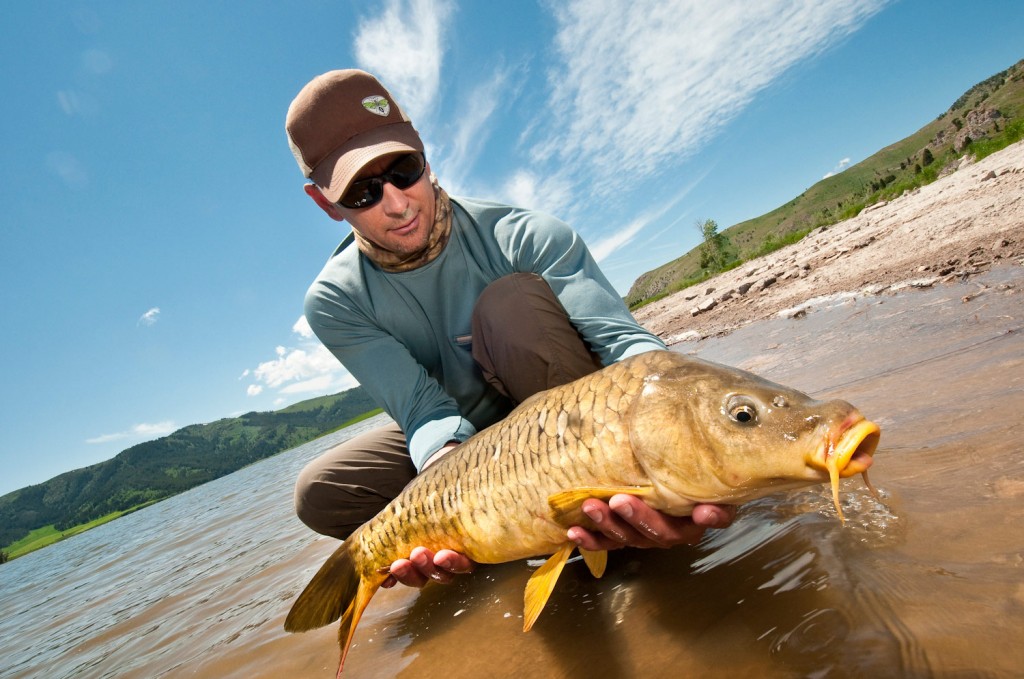
I recently had the great pleasure of spending a day carp fishing with my friend Bruce Smithhamer. It was every bit as challenging as promised. The fish were gearing up for the spawn and were lock jawed. We would have gone fish-less if not for Bruce’s encyclopedic knowledge of the species. We changed locations and tactics several times and eventually got into fish.
Carp, especially Mirror Carp, are a remarkable fish. Their color and scale patterns are reminiscent of classical Japanese painting. Their eye sight is excellent and there hearing quite acute. They are even able to communicate danger to other carp by releasing a pheromone in to the water. Their behavior is unpredictable except that they will refuse more often than eat.
Perhaps their most remarkable quality is their ability to completely ruin a good trout fisherman. I’ve seen several guys go down this road and few come back. They started out
Read More »Bahamas Poon
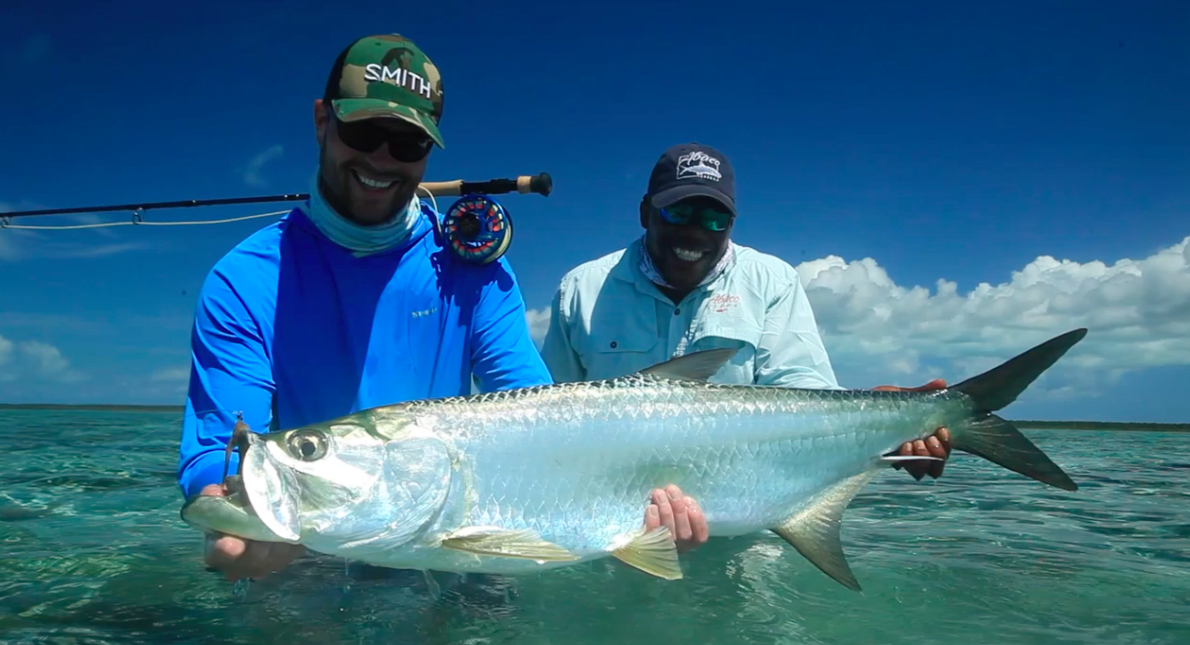
There’s no such thing as a bad day of flats fishing in the Bahamas.
There are however, exceptional days. The G&G hosted trip to Abaco Lodge this March had it’s fair share of exceptional days. We had a great group of anglers, beautiful weather and great fishing. You couldn’t ask for more, but we got more anyway.
Anglers Shane Maybush and Peter Olsen both got nice tarpon. Shane was doubley blessed to have lodge manager Christiaan Pretorius, and his pile of cameras and drones, on the boat when it happened. Chris put together this stunning short video of the event, which features some pro-level fish fighting and line dancing by Shane. Shane guides for Mossey Creek Outfitters in VA. If you’re in the area, look him up.
CHECK OUT THIS AWESOME VIDEO BY CHRISTIAAN PRETORIUS.
Read More »The more things change, the more they stay the same

I RECEIVED THIS PHOTO FROM MY BROTHER TOM, VIA TEXT MESSAGE.
It seems he has been sorting through some of the belongings that my grandparents left behind. In an old dresser he found this list in my young handwriting. My guess is that this dates from about the time I was ten. I believe I had just read “The Old Man And The Sea” for the first time. For those who can’t make it out, I’ll translate.
Fishing List
Harpoon
1000 yards strong rope
Case of dynamite
Buoy
Take pistol
Dynamite
License
A few of my favorite points to this list are these. Dynamite appears twice. I’m not sure if this was meant to imply that a case might not be enough, or that dynamite was so key to my plan that I couldn’t risk forgetting it, or possibly just a testament to my enthusiasm about dynamite. There was no need to find a pistol, just the need to remember the one I had, at ten. And best of all my reverence for the regulations. We wouldn’t want to ‘fish’ without a license.
It occurred to me that maybe I harp on the catch and release thing a little heavy from time to time and it would only be what I deserve to share this with my readers. None of us, I suppose, start out as catch-and-release anglers but few, apparently, start as far from it as I did. In my defense I’ll say that this proves my views on catch and release are not an unconsidered opinion. I tried it the other way!
When I shared this with my wife as a glimpse into the mind of her betrothed when he was only a child she smiled, laughed a knowing laugh and said,
“The more things change, the more they stay the same.”
I guess I’ll always be ten at heart. At least when I go fishing.
Read More »There’s No Right Answer

I have some bad news for you. You’re not doing it right.
I was reading an article on fishing streamers and the author was pressing the importance of neutral buoyancy. The idea being that the fly neither sinks, nor floats. His assertion being that, when fished with a drift and twitch presentation, these flies more accurately imitate an injured baitfish. I have a good friend who is a master of this technique and, after watching him coax some very big fish out of cut banks, I started using it a fair bit myself, but here’s the thing. It’s not the right way to do it.
I was out on the river one day tuning up my spey cast in preparation for a steelhead trip. When I was done, and headed back to the truck, a woman who had been watching me asked,
“Are you some kind of expert?”
“Ma’am, this is fly fishing,” I replied, “we’re all experts.”
Each of us, regardless of our level of expertise, is largely a self-styled angler. We learn by trial and error which techniques will catch us a fish and when. Generally, in our own minds, we know the right way to do it. Or do we? I know this is kind of an esoteric fishing tip, but my point is this.
There are no right or wrong answers.
Dead drifting streamers is a great technique. So is jerk stripping heavy patterns, and fishing floating flies on a sinking line. All of those techniques, and many more, produce fish at the right time. They are all equally right and equally wrong. The question is not, “What’s the right way to fish the fly?” The questions is, “What’s the right time to fish in that way?”
I have a good friend who has been learning to fly fish the last couple of years and this is something he has really struggled with. He will ask me for advice on fishing in a given situation, and when he gets it, he’ll frequently point out that it contradicts something I told him before.
“Yep,” I’ll tell him, “but that was then, this is now.”
Most of us, especially when we are learning, want the “right answer” that’s going to work all of the time. The truth is, it just doesn’t exist. Conditions change constantly as does the mood of the fish. It’s our ability to adapt to that change which makes
Read More »Speyitis
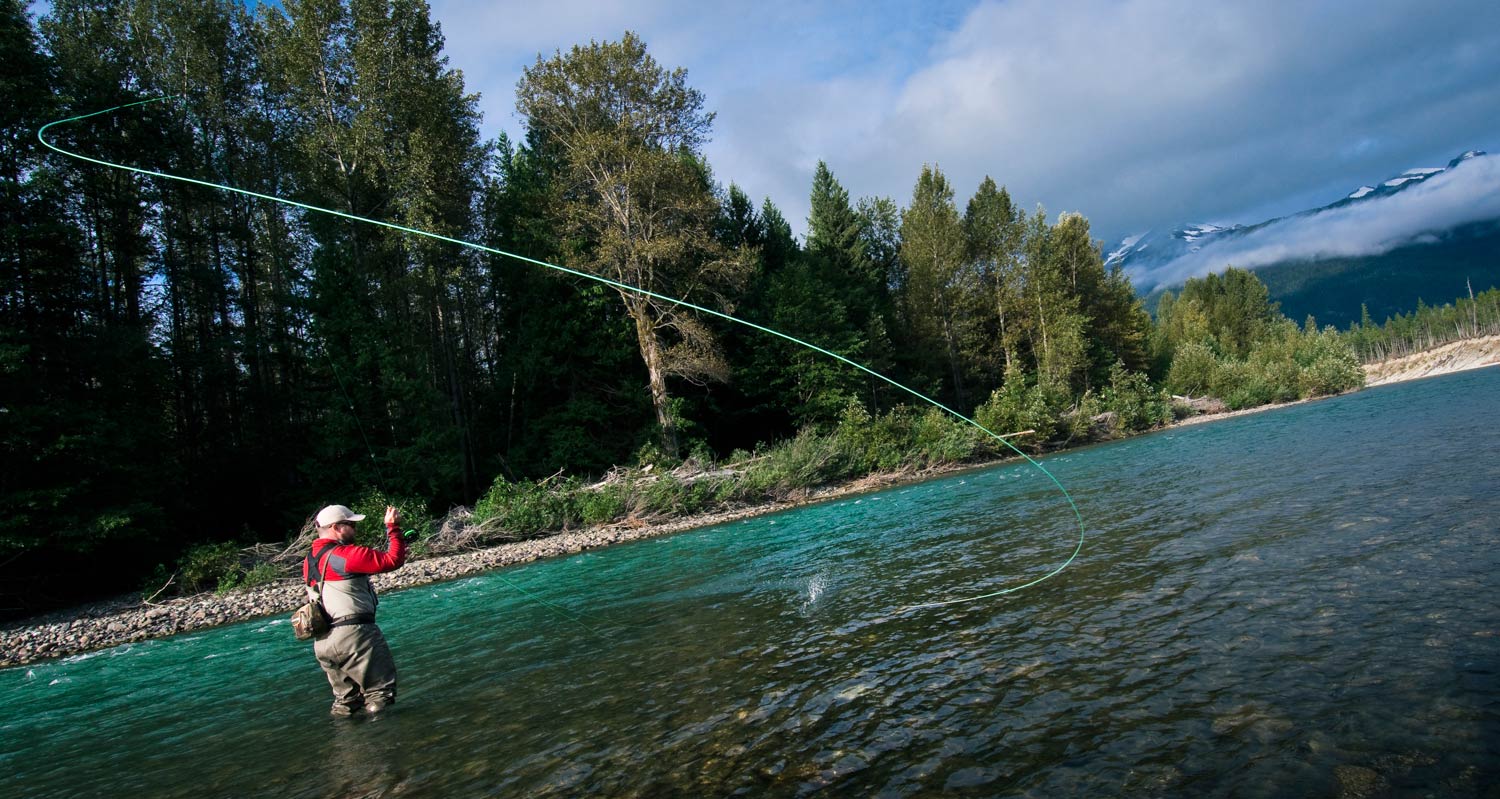
By Jeff Hickman
THE MOST COMMON FISHING PROBLEM I SEE AMONG SPEY FISHERS WHO CAN CAST WELL IS OVER CASTING.
I refer to this plague as Speyitis. Just because you can cast all the way across the river doesn’t mean that you should all the time. I know it is fun to throw a long line and its even more fun if you can get yanked way out there. For successful fishing it’s important to read the water and decide if a long cast is important there. Much of the time in many spots the fish is likely to be in the inside soft water. Casting across the seam way out into the heavy current you are wasting your time, not allowing your fly to sink and also not allowing it to effectively swing all the way in below you.
If fishing with sinktips, the question to ask yourself or your guide is
Read More »5 Reasons People Don’t Catch As Many Trout As They Should
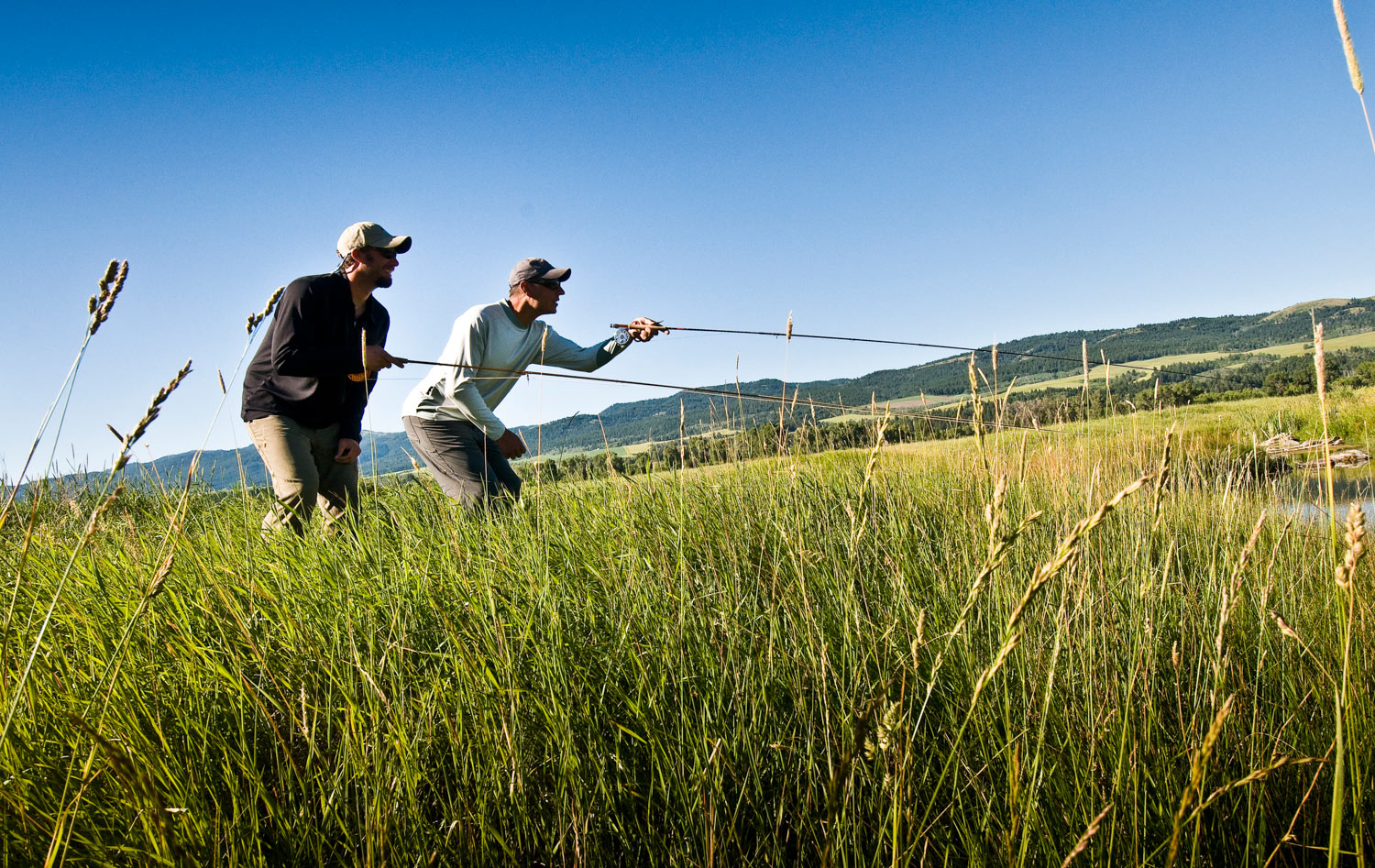
By Kyle Wilkenson
These 5 bad habits will keep you from catching the fish you deserve.
Whether I’m guiding or working in the shop, one thing rings true– I talk to a lot of anglers. Living in Denver, a lot of these anglers have made it past the ‘beginner’ stage but still aren’t catching as many fish as they’d like, or with the consistency they’d like. It is not enough in fly-fishing to simply get comfortable with your clinch knot and roll cast and expect the numbers of fish you’re catching to increase dramatically. I guide a lot of our customers who fall into this category– let’s call it ‘intermediate– and over the years it seems we always end up working on the same 5 things.
SO WITHOUT FURTHER ADIEU, HERE ARE MY TOP 5 REASONS PEOPLE DON’T CATCH AS MANY TROUT AS THEY SHOULD:
1. They Cast First and Look Second. I started with this reason because, in my opinion, it is the one thing people have the most trouble wrapping their head around. In reality, the correct order would be Look First. Cast Second. This is particularly true if you fish anywhere that presents itself with sight fishing opportunities. Whenever you approach the river, take a minute (or sometimes literally several minutes) and study the water. You’ll be amazed how many times there will be fish right at your feet, ready to eat your fly. More often than not though, people walk right up to the river and charge on in without ever breaking stride. By doing this, not only did you likely just walk through fish that could have been caught, but you also just sent them darting for the depths in a panic which can put other fish in the area on alert. Spotting fish in the water is not an ‘easy’ skill and is not something you learn to do in one day. Sure, we guides may make it look easy some days to spot fish wherever we walk, but I promise you this skill was hard-earned. Start making it a point to study the water looking for fish and once you have those first few successes, you’ll never look at the river the same way again.
2. They Don’t watch the bubbles. If you’ve never paid attention before to the speed of the bubbles on the surface versus to the speed your indicator,,when nymphing, it’s time to start. Simply put, the indicator NEEDS to be floating slower than the bubbles on the surface and here’s why. When it comes to nymphing, most of the time the fish you’re targeting are going to be sitting very tight to the bottom. The water on the bottom of the river is moving slower than the water on the surface. If your indicator is floating the same speed as the bubbles on the surface then this means your flies are whizzing by the trout at an unnatural rate of speed, if they’re even getting down into the zone at all (which they’re likely not). This problem can easily be fixed by
Read More »